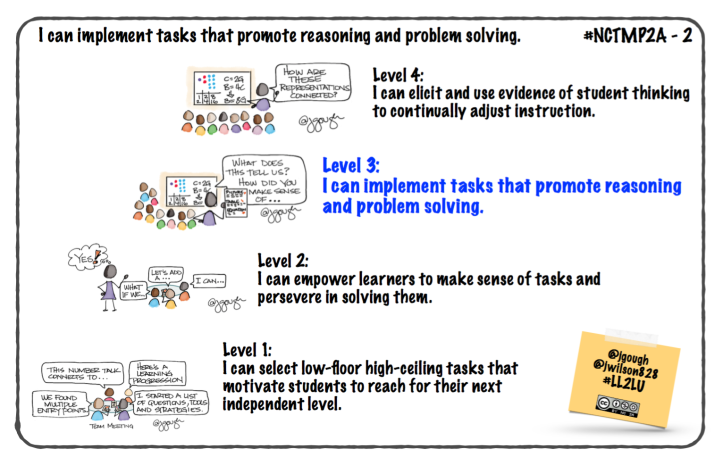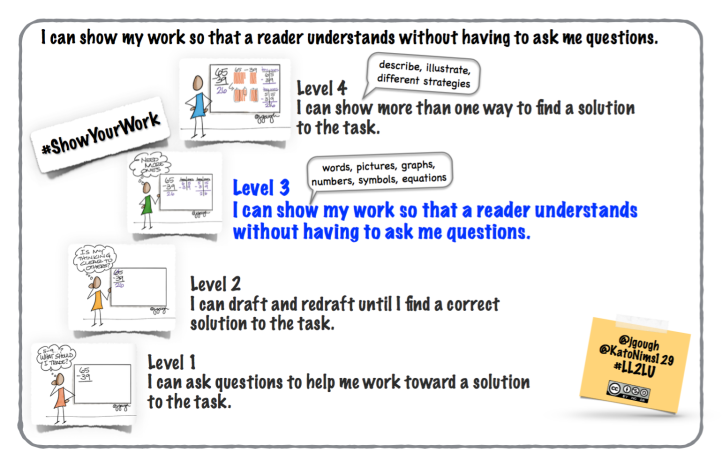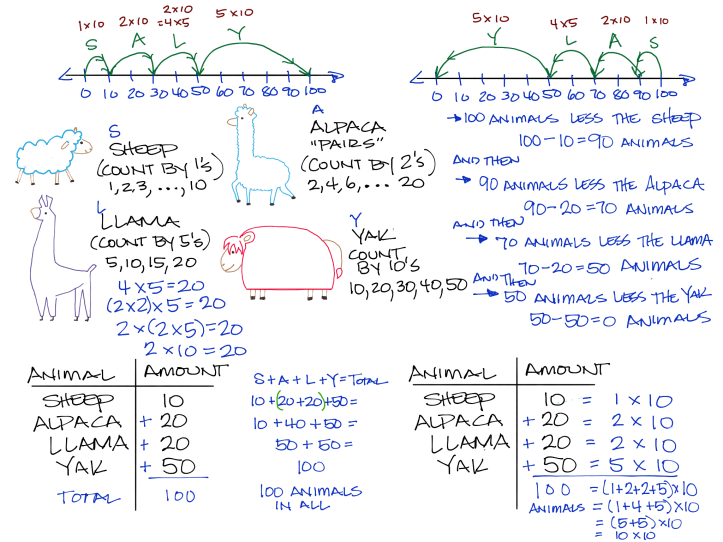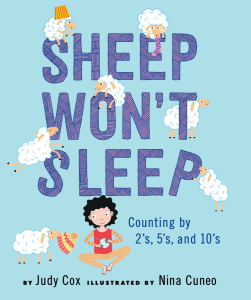How might we deepen our understanding of numeracy using children’s literature? What if we mathematize our read aloud books to use them in math as well as reading and writing workshop?
Have you read Sheep Won’t Sleep: Counting by 2’s, 5’s, and 10’s by Judy Cox?
This week’s Embolden Your Inner Mathematician session is designed to learn and practice both a Mathematics Teaching Practice and a Standard for Mathematical Practice.
Implement Tasks that Promote
Reasoning and Problem Solving.
Effective teaching of mathematics engages students in solving and discussing tasks that promote mathematical reasoning and problem solving and allow multiple entry points and varied solution strategies.
Jennifer Wilson and I use the following learning progression to help teachers and teaching teams calibrate their work.

From the Standards for Mathematical Practice,
Construct viable arguments and
critique the reasoning of others.
Mathematically proficient students understand and use stated assumptions, definitions, and previously established results in constructing arguments. Elementary students can construct arguments using concrete referents such as objects, drawings, diagrams, and actions. Such arguments can make sense and be correct, even though they are not generalized or made formal until later grades. Students at all grades can listen or read the arguments of others, decide whether they make sense, and ask useful questions to clarify or improve the arguments.
We choose to reword this for our students. Instead of I can construct a viable argument, we say I can show my work so a reader understands having to ask me questions.
We use the following learning progression to help students self-assess and reach to deepen their learning.

Now, Sheep Won’t Sleep: Counting by 2’s, 5’s, and 10’s by Judy Cox gives away the mathematical thinking on some pages. We decided to read the book and ask our students to listen and take notes as readers, writers, and mathematicians. Mathematicians notice and note details, look for patterns, and ask questions. To support listening and comprehension (a.k.a. empower learners to make sense and persevere), we created visuals for quasi-reader’s theater and spelled sheep, alpaca, llama, and yak. (Level 2; check.)

We also practiced a keep the pace up and get kids collaborating instead of relying on the teacher strategy we are learning from Elizabeth Statmore.
And every day I used 10-2 processing to keep the pace up and get kids collaborating instead of relying on me. For every ten minutes of notes, I gave two minutes of processing time to catch up and collaborate on making their notes accurate. (Statmore, n pag.)
Instead of 10-2 processing, we took a minute after every couple of pages to intentionally turn and talk with a partner with the express purpose of comparing and improving our notes and mathematical communication.
As teachers, we are striving to implement tasks that promote reasoning and problem solving. Sheep Won’t Sleep: Counting by 2’s, 5’s, and 10’s is a counting book so 1st graders can tackle the math. 2nd and 3rd graders can use this to connect skip counting and repeated addition to multiplication and to use and connect mathematical representations. 4th and 5th graders can use this to use and connect mathematical representations while attending to precision. (Level 1; check.)
Here’s a messy version of how we anticipated student work and thinking.

These read-aloud moments open up the opportunity for rich discussion and engaging questions. Students have the opportunity for more organic and deeper understanding of mathematical concepts thanks to the book that brought them to life, and it is an engaging way to look at math through a different lens.
As Professor of Mathematics Education at the Stanford Graduate School of Education Jo Boaler explains in her book Mathematical Mindsets: Unleashing Students’ Potential through Creative Math, Inspiring Messages and Innovative Teaching, “Mathematics is a subject that allows for precise thinking, but when that precise thinking is combined with creativity, flexibility, and multiplicity of ideas, the mathematics comes alive for people.”
Boaler, Jo. Mathematical Mindsets: Unleashing Students’ Potential through Creative Math, Inspiring Messages and Innovative Teaching (p. 115). Wiley. Kindle Edition.
Leinwand, Steve. Principles to Actions: Ensuring Mathematical Success for All. Reston, VA.: National Council of Teachers of Mathematics, 2014. Print.
“Standards for Mathematical Practice.” Standards for Mathematical Practice. N.p., n.d. Web. 15 Dec. 2014.
Statmore, Elizabeth. “Cheesemonkey Wonders.” First Week and AVID Strategies. 25 Aug. 2018.

[…] ways to mathematize Sheep Won’t Sleep. See the next blog post for additional […]
LikeLike